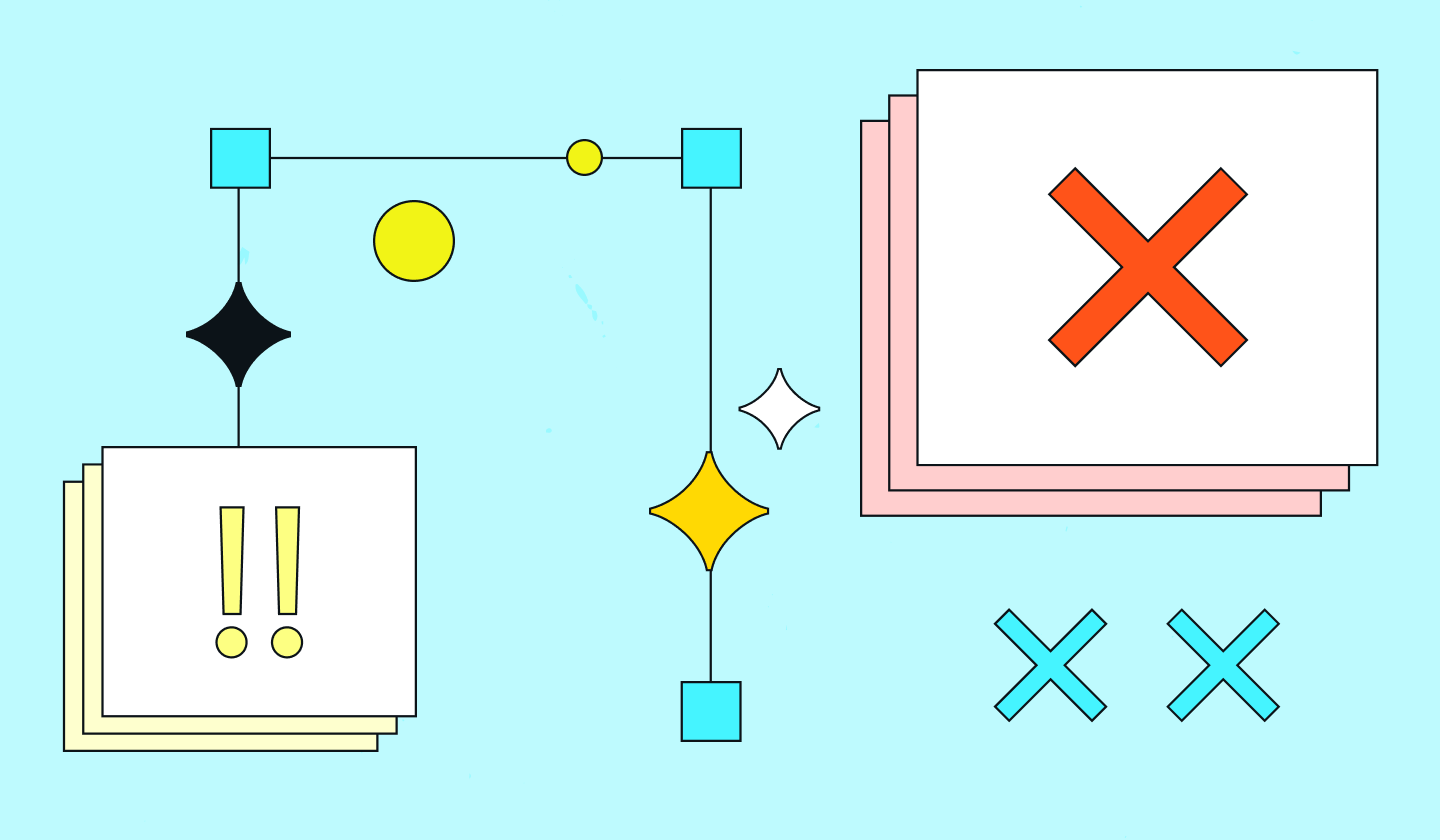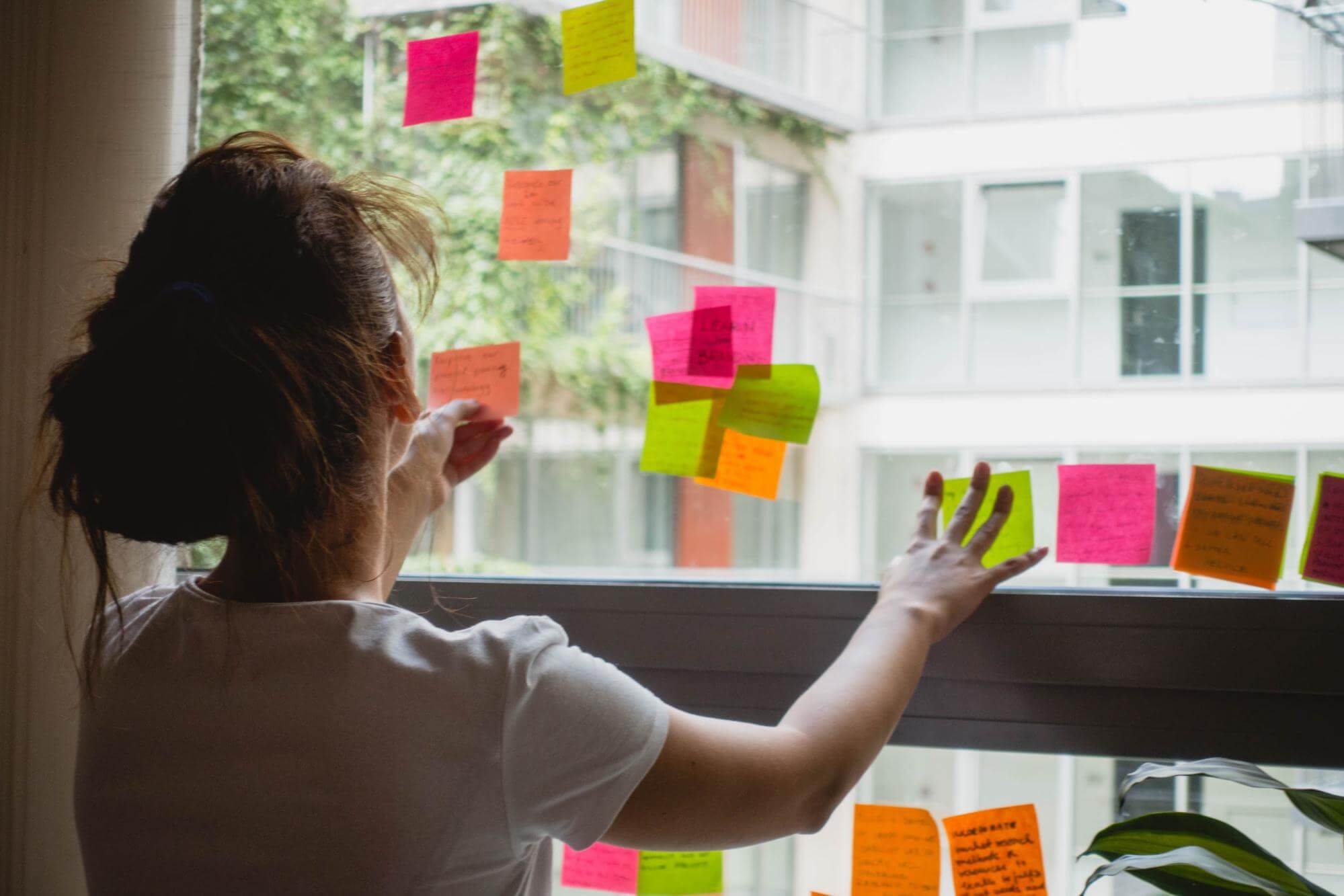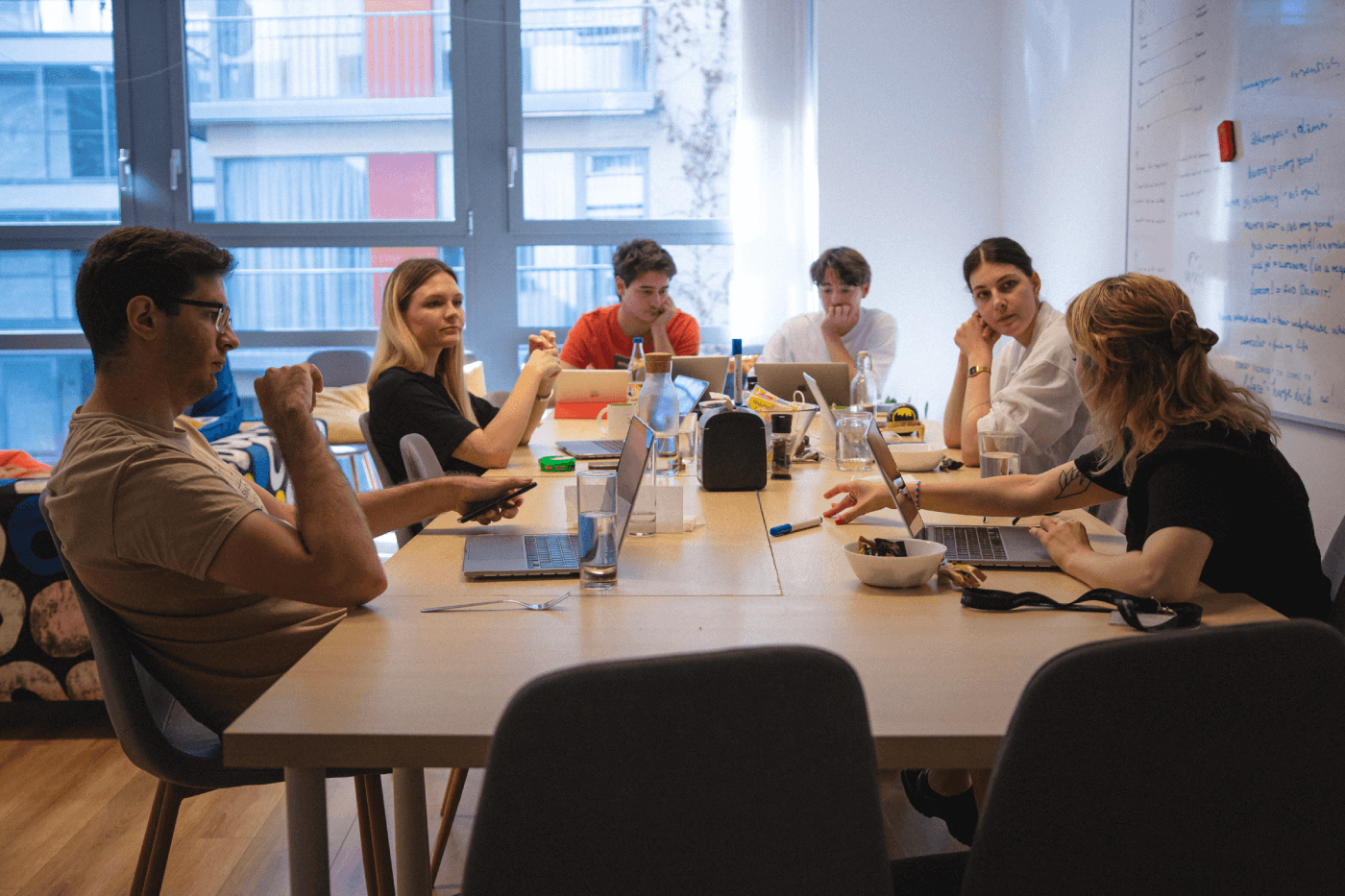Contents
Building a digital product or service requires a team of people with different attitudes and backgrounds to work together on a daily basis. Even if we share the same goal, we may have opposing ideas, approach problems differently, or set priorities differently. Creating an environment where everyone on the team feels motivated and happy is essential for a successful collaboration. In this article, we will discuss the most common mistakes UXers make when working with non-UX professionals. Recognizing these mistakes is the first step in building a fruitful collaboration.

For best performance, creating the right environment is essential – but not easy. You need to build trust, respect, and smooth communication, which always takes time. It can be even more difficult if you work in an agency or as a freelancer and join an existing team as an external employee. In this case, you usually don’t have time to get to know your new colleagues better – how they work, what they expect from you, and what you can expect from them. You will have to focus on your tasks from day one and might not have the time to build a real relationship with your new colleagues, which – on the other hand – is essential for creating a motivating environment.
Let’s take a look at the most common “mistakes” we, UX designers and researchers, can make when working with people who are less familiar with UX design and UX processes. The majority of mistakes are unintentional since we don’t realize we’re making them. Admitting our mistakes can be uncomfortable, but it’s the first step in making a change and creating a supportive team environment when building digital products.
What went wrong? Could it have been otherwise?
Let’s imagine a simple but common situation. There is a digital product that a dedicated team wants to improve. Regardless of the specific goal, a product team usually consists of many colleagues with different knowledge and responsibilities. For example, a product designer who wants to create an aesthetically pleasing and consistent product, a UX researcher who wants to make the users satisfied, a project manager or product owner who has to make sure the product will be profitable. All are experts in their field, but for some reason, they may face difficulties making the collaboration work and creating the product the way they envisioned it.
After a few weeks, people start complaining. The product owner or project manager is not happy with the result. This makes the designer and the researcher lose their motivation. At the same time, they feel they would need more input from the client to see how to improve the product/design. The tension begins to affect everyone, and no one is willing to speak up to address the problem. This situation leads to a project that is no longer enjoyable for anyone involved.
So let’s see what could have created friction.

Common mistakes that create friction
Focusing on the task, disregarding the social factor
The value of social relationships in the workplace should not be ignored, as they play a significant role in our mood and motivation levels. As Aristotle once said, “Man is by nature a social animal,” and this is reflected in how our everyday lives and emotions are affected by the relationships we have. We shouldn’t underestimate this inherently important social factor in work either.
The trap
If you work for a UX agency or as a freelancer, the project you work on will usually be temporary. When you work on a project with someone for a short time, it is somewhat natural to just focus on the work and the desired outcome. Getting to know the people we are working with becomes secondary. This is natural human behavior. After all, why make an effort to get to know someone if we will only work with them for a short period?
This attitude leads us to focus only on the professional tasks and results, forgetting the importance of the social part of a collaboration. As designers and researchers, we often make the mistake of focusing too heavily on results and disregarding the social aspect of our work. We may not even realize the negative impact this can have on our mood and motivation levels. The mistake we can make here as designers and researchers is to resign ourselves to a not-that-good collaboration or atmosphere.
Suggestions
It doesn’t matter if you are only working with someone for a short period of time. Creating a comfortable and open environment can make a huge difference in the efficiency of your work.
According to a study by Google, successful teamwork is not only about skills and expertise but also about interpersonal dynamics and psychological safety within the team. The research discovered that effective teams spent time fostering an environment of trust, empathy, and mutual understanding. So, when we enjoy the company of our colleagues, we are more motivated and willing to put in the effort required.
While we cannot choose the personalities of our colleagues, we can take action and initiate a change instead of resigning ourselves to a bad collaboration. It is important to keep in mind that focusing on results is essential to success, but ignoring the work environment is a mistake. If you are unhappy with the team dynamics, don’t hesitate to raise your concerns and schedule a separate meeting to discuss how you can improve the collaboration. It is also important to give other team members the opportunity to share their perspectives, as they may have insights that you may not have considered.
If you are surrounded by colleagues you enjoy being with, your motivation and productivity will skyrocket. Also, an unpleasant job may not be so bad if the team dynamics are working fine.
Forgetting that not everyone is a UX expert
A few days ago, I talked to a carpenter about making a piece of furniture for us. After discussing the main features, he asked questions like: do we want wood with horizontal or vertical grain? Is it okay if it has three closed compartments and two open ones? Then he also showed me tiny pieces of wood in different shades of brown and asked me to choose which one I wanted for our large piece of furniture. I felt embarrassed. I didn’t know how to answer these questions because I couldn’t imagine how all these things would look on a huge piece of furniture in our living room. All I could say was that he had more experience, and I asked him what he thought would look good.
It is easy to imagine that clients, POs or PMs, or other stakeholders can easily feel the same way when we ask them questions regarding the design. Questions that seem simple to us but not to them.
The trap
We often assume that stakeholders have the same level of understanding of UX processes as UX experts, but this is not always the case. They may not fully understand UX-related questions, topics, or its language.
I often hear UX professionals complaining that they are not getting the information they need to move forward. It is important to accept that many people have never worked with UX professionals or have not heard much about UX processes. This contributes to them not providing enough information, not because they don’t want to, but because they don’t understand why, what, and how to do it. They might not be able to imagine what different fonts or colors would look like in real life, or they might not fully grasp the purpose of personas.
Suggestions
We shouldn’t assume that they are experts in our field and should communicate with them in a way that is easy for them to understand. Try to assess their UX maturity level and take the time to educate your colleagues whenever necessary. Be patient, and instead of blaming them for not providing enough information, try to put yourself in their shoes and understand their perspective.
UX and product design are collaborative fields where everyone’s expertise and knowledge must be combined to achieve success. One of the foundations of this collaboration is the efficient and continuous exchange of information. It is a two-way street, and it is our responsibility as UX professionals to facilitate this exchange of information in a way that is understandable and accessible to everyone involved in the project.
Sticking to our processes too much
At UX, we have evolved our approach, established processes, tools, and best practices over the past few years. UX designers working as freelancers or in agencies often face the challenge of dealing with different clients and projects, each with their own unique requirements and constraints. The question then arises: do we, Ux designers, really take into account the unique needs of each client and project? Are we really flexible enough to adjust our usual processes and methods to better fit the needs of the project?
The trap
In an ideal project, a research process should follow the following steps:
- Onboarding/understanding
- defining persona(s),
- clarifying key research questions,
- conducting discovery research and analyzing existing data,
- continuously testing assumptions and reviewing designs.
However, there may be times when a project does not fit into this process. If we don’t recognize this and we insist on following a set process even if it doesn’t fit the project, it can have a negative effect on the collaboration.
Let’s see an example
I was once assigned to a project where there was no time or space for a proper onboarding and discovery phase. The stakeholders insisted on the original timeline. Despite knowing this wasn’t the best way to start the project, we decided to keep an open mind and learn as much as possible as the project progressed. After the first two rounds of interviews, I obtained some valuable insights, but of course, I felt I could have retrieved more information with a little more background knowledge. But I learned a lot over time and started to put the ‘big picture’ together from the little pieces. Eventually, things became clearer to me, and we developed a very good working relationship with our new colleagues.
It may not have been the best way to start, but we built trust within the team and slowly got all the information we needed. If we had insisted on a proper onboarding at the beginning, we’d have been involved in pointless arguments and would have made the collaboration more difficult. So the first two months were very difficult for us, but eventually, we created a smooth environment where it was easier to ask questions, discuss different points of view, and give and receive feedback.
Same can happen with tools
When we use our usual tools and expect everyone else to be as familiar with them as we are. Figma, FigJam, Miro – we designers and researchers use these tools every day, but the other stakeholders may have no experience with them. This can make it difficult for them to share feedback and collaborate effectively. They may not feel comfortable using these tools and may prefer to share their thoughts in some other way.
Have you ever switched from a Windows laptop to a Macbook or vice versa? When I first got a Macbook, it took me weeks to get used to it. I had a lot of trouble figuring out the different keyboard shortcuts and other functionalities. Google was my friend, but it took so much time that all I wanted was my old Windows laptop back.
No one is an expert on everything, and there are situations where you do not want to spend time learning a new tool but would rather work in your old, conventional way.
Suggestions
If you feel your colleagues are not comfortable with following a certain way of working or using a tool, try to be flexible and stick less to your predefined processes. Probably the one you propose is the best way from a researcher or designer point of view, but trying new ways and adapting to others’ processes can also be a way to achieve the goals. Being flexible not only builds trust within the team but also leads to a smoother working environment where feedback and collaboration are easier. If you are interested in how you can improve your cognitive flexibility, read this article.
Mistakes can be excellent learning opportunities
UX is fundamentally a collaborative process, meaning we must work in teams to achieve success. But to make teamwork dreamwork, we also need to create an environment where everyone is motivated. In this article, we went through common barriers to smooth collaboration we often experience in client work.
Did you identify some behaviors you are guilty of? It’s time to work on them. We hope we achieved our goal and made you reflect on your own experience of challenging situations. Recognizing your weaknesses and figuring out what you could have done differently is the first step toward creating a successful change.
Stay tuned if you’re interested in knowing more about how you, as a UX professional, can create a smooth collaboration with non-UX colleagues. A blog post with a step-by-step guide on how to achieve successful teamwork will be published soon.
Until then browse our other articles related to project and client management.





